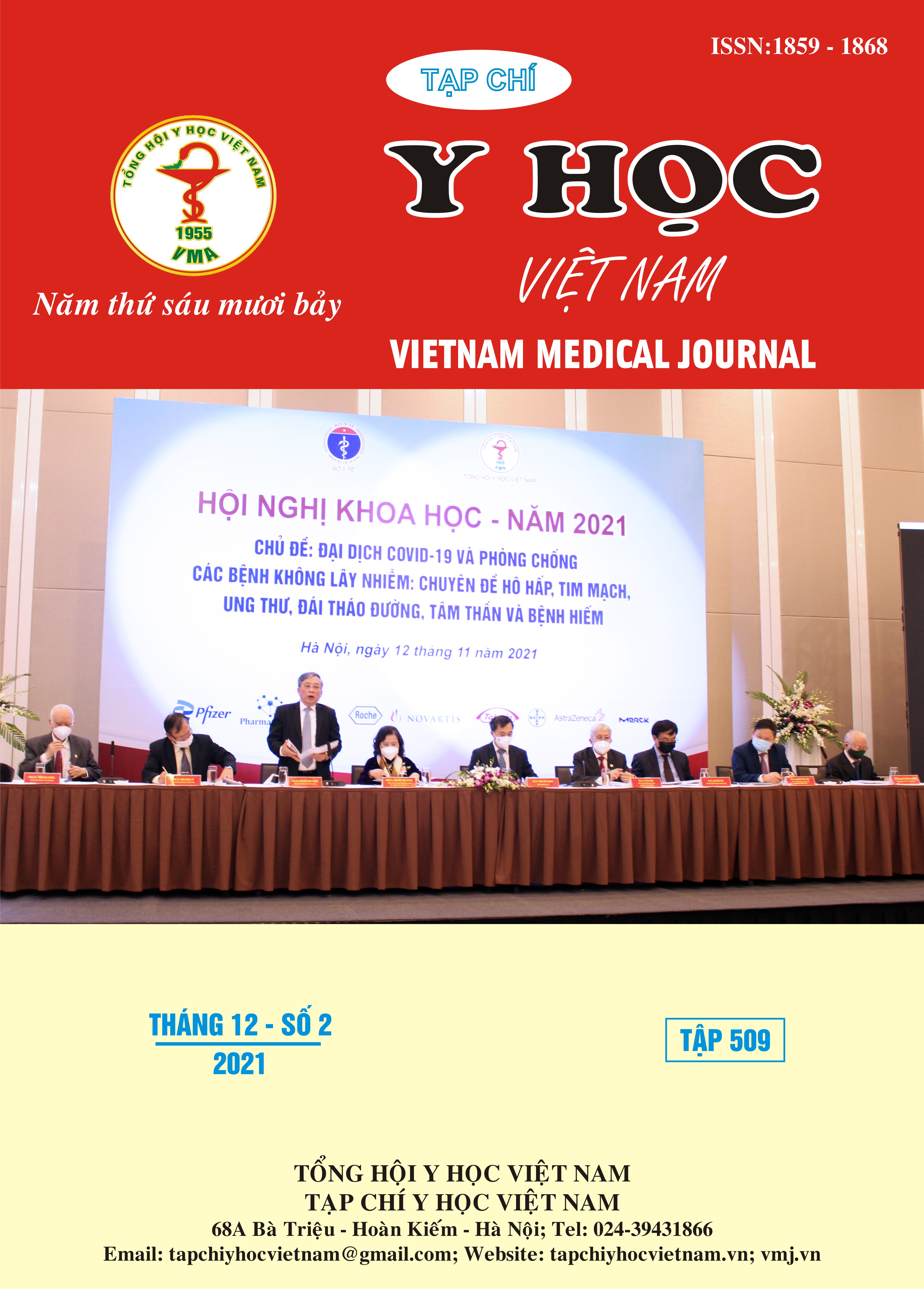PROSPECTIVE VALUE OF PRE-ECLAMPSIA, ECLAPMSIA OF PlGF AND PAPP-A IN THE RISK GROUP AT HAI PHONG OBSTETRICS AND GYNECOLOGY HOSPITAL
Main Article Content
Abstract
Purpose: Investigate the prognostic value of pre-eclampsia and eclampsia of PlGF and PAPP-A test in risk group at Haiphong Obstetrics and Gynecology Hospital (07/2019- 09/2020). Subjects and methods: 170 pregant women with pre-eclampsia risk diagnosed who came to the examination, management of pregnancy at Hai Phong Obstetrics and Gynecology Hospital. Cross-sectional, retrospective description. Results: 16/70 cases were positive for the predictive test for pre-eclampsia, accounting for 9,4%. The mean value of PAPP-A of the pre-eclampsia group was 2,23 ± 0,59, the cut-off of the predictive value of PAPP-A was 2,45 MOM, sensitivity: 66,7%, specificity: 75,5%. The group with PAPP-A value <2,45 MOM had 1 6,1 times greater risk of pre-eclampsia. The mean value of PlGF of the pre-eclampsia group was 38,3 ± 10, the cut-off of the predictive value of PlGF was <35,5 pg/ml, sensitivity: 66,7%, specificity: 78,4%. The group with PlGF value <35,5 pg/ml had 1 6,7 times greater risk of pre-eclampsia. Conclusions: The group with PAPP-A value <2,45 MOM had 1 6,1 times greater risk of pre-eclampsia. The group with PlGF value <35,5 pg/ml had 1 6,7 times greater risk of pre-eclampsia.
Article Details
Keywords
screening, pre-eclampsia, eclampsia
References
2. Spencer K., Cowans N., Chefetz I., et al. (2007), "First‐trimester maternal serum PP‐13, PAPP‐A and second‐trimester uterine artery Doppler pulsatility index as markers of pre‐eclampsia", Ultrasound in Obstetrics and Gynecology: The Official Journal of the International Society of Ultrasound in Obstetrics and Gynecology, 29 (2), pp. 128-134.
3. Poon L., Kametas N., Chelemen T., et al. (2010), "Maternal risk factors for hypertensive disorders in pregnancy: a multivariate approach", Journal of human hypertension, 24 (2), pp. 104-110.
4. Parra‐Cordero M., Rodrigo R., Barja P., et al. (2013), "Prediction of early and late pre‐eclampsia from maternal characteristics, uterine artery Doppler and markers of vasculogenesis during first trimester of pregnancy", Ultrasound in Obstetrics & Gynecology, 41 (5), pp. 538-544.
5. Bodnar L. M., Ness R. B., Markovic N., et al. (2005), "The risk of preeclampsia rises with increasing prepregnancy body mass index", Annals of epidemiology, 15 (7), pp. 475-482.
6. Sohlberg S., Stephansson O., Cnattingius S., et al. (2012), "Maternal body mass index, height, and risks of preeclampsia", American journal of hypertension, 25 (1), pp. 120-125.
7. Bartsch E., Medcalf K. E., Park A. L., et al. (2016), "Clinical risk factors for pre-eclampsia determined in early pregnancy: systematic review and meta- analysis of large cohort studies", Bmj, 353.
8. Organization W. H. (1995), "Physical status: The use of and interpretation of anthropometry, Report of a WHO Expert Committee".
9. Velauthar L., Plana M., Kalidindi M., et al. (2014), "First‐trimester uterine artery Doppler and adverse pregnancy outcome: a meta‐analysis involving 55 974 women", Ultrasound in Obstetrics & Gynecology, 43 (5), pp. 500-507.


